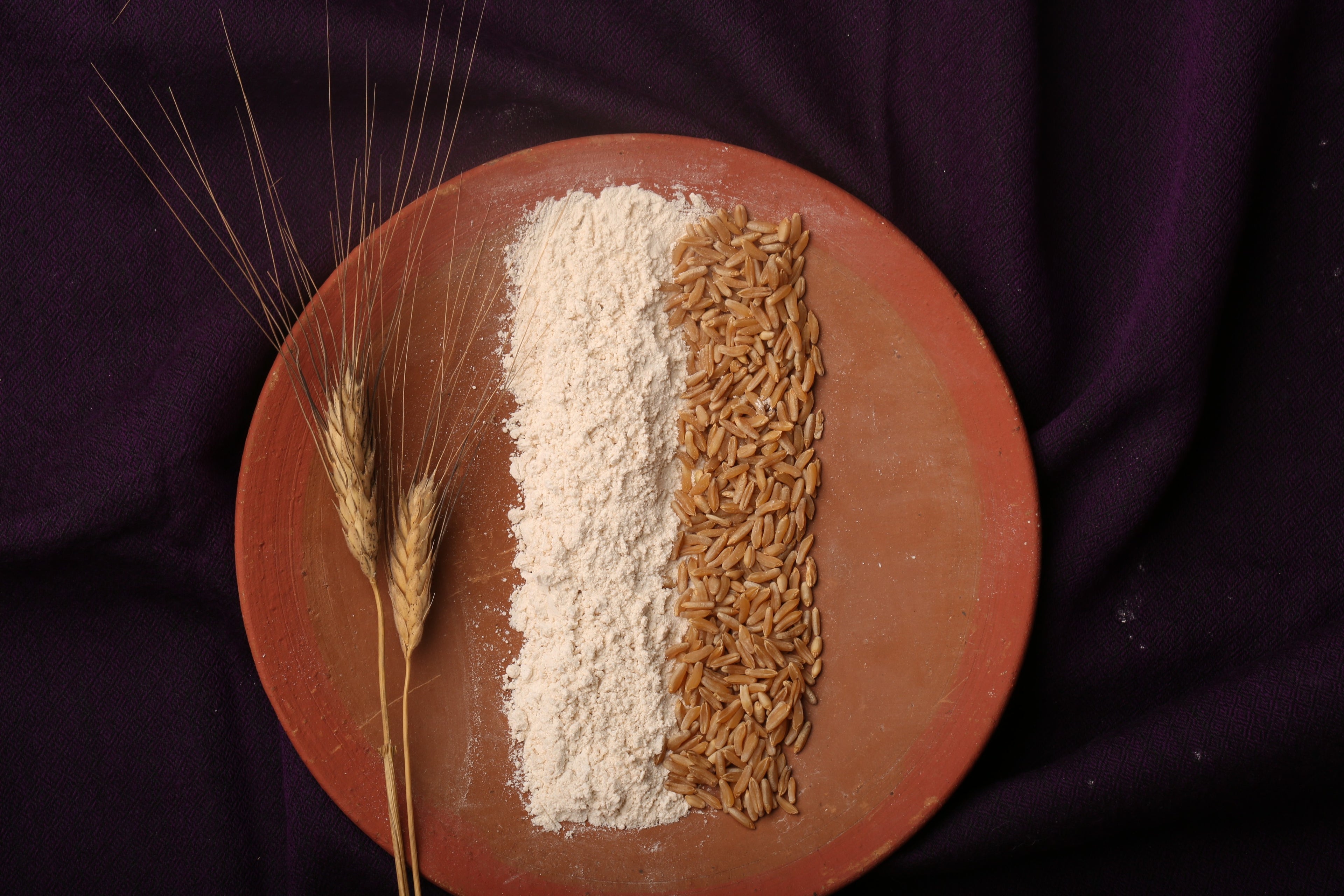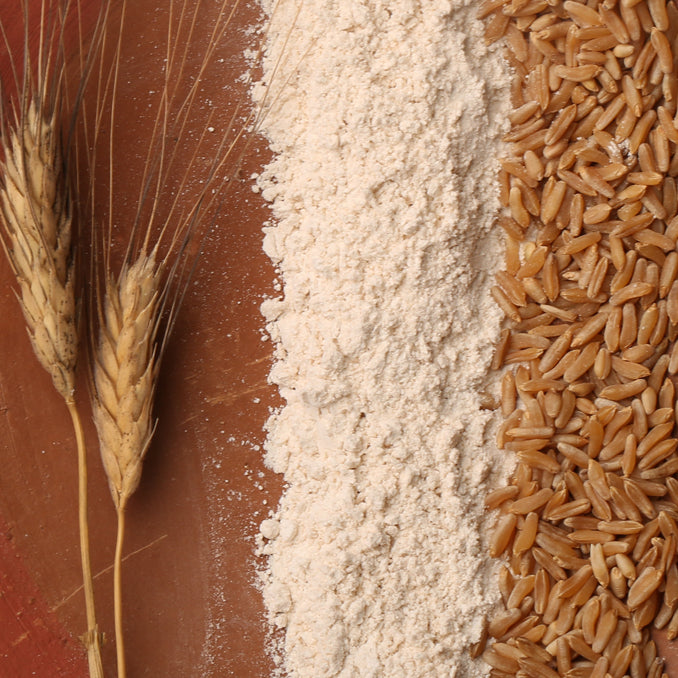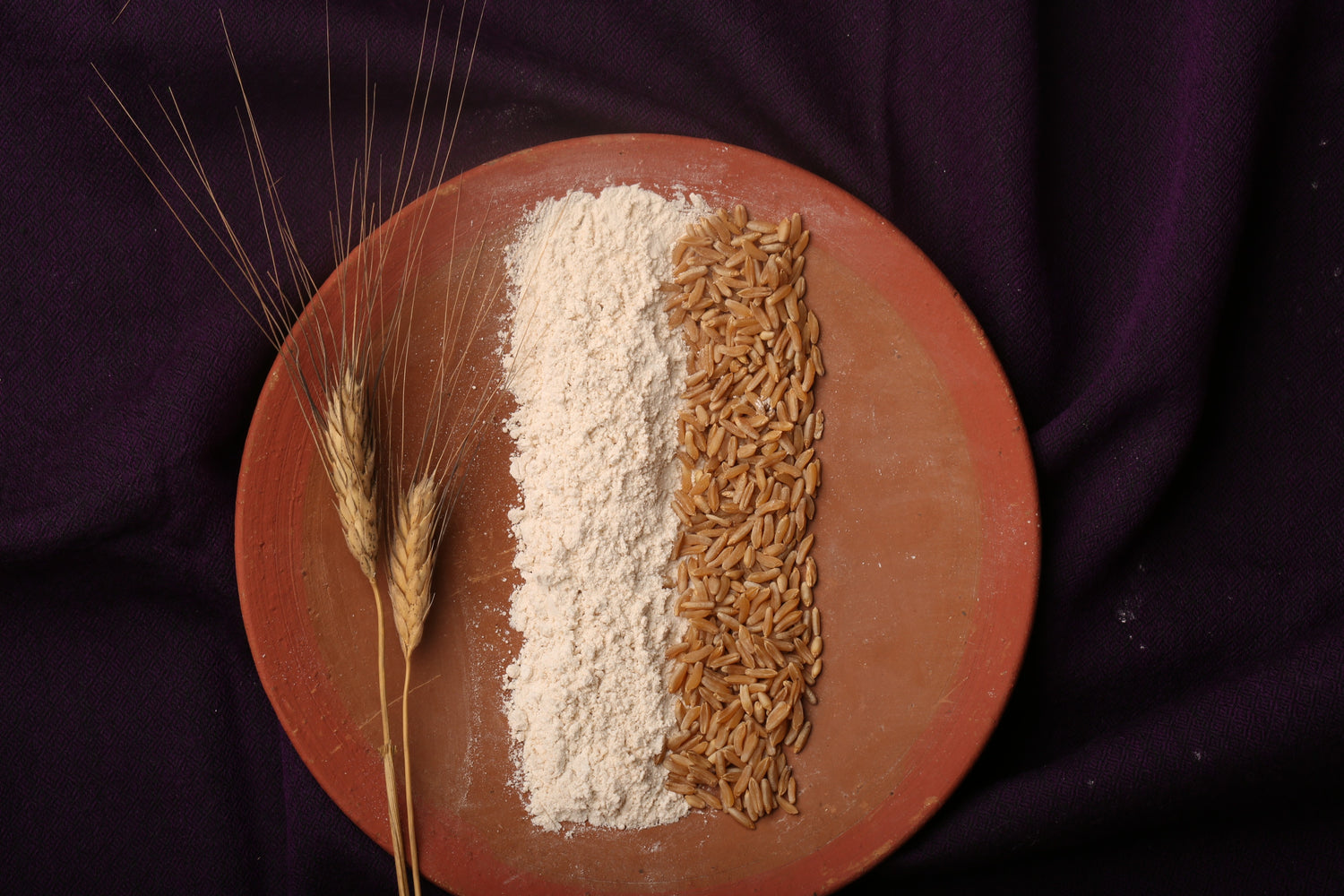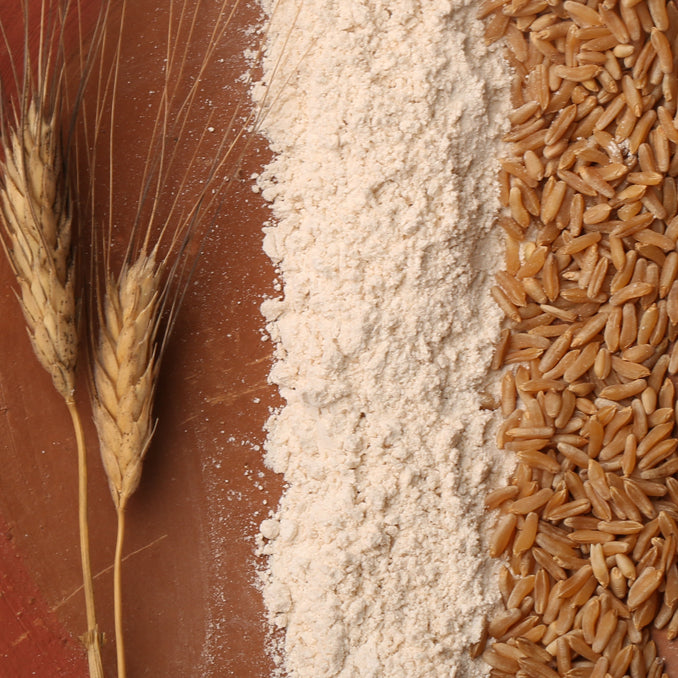

Additional Product Details
Description
Kalibal, is a Durum wheat variety like Bansi, and was selected from domesticated hulled Emmer wheat. About 10 varieties of Durum wheat were documented in India in the first decade of the 20th century. They were extensively cultivated for rotis, flavour, nutrition and and yield as compared to white and soft bread wheat varieties.
Modern Durum wheat varieties lack the advantages of heirloom Durum wheat varieties since they have been bred to improve their baking properties; one of the most important being that gluten in modern varieties is more easily accessible than the older varieties.
Older Durum wheat varieties like Kalibal are weak or less elastic due to poor gluten network, making them excellent for pasta and semolina.
Heirloom Kalibal is rich in proteins and gluten. However, due to its hard endosperm, gluten is not easily accessible from this heirloom variety.
OOO Farms provides the heirloom Kalibal wheat variety.
Ingredients
Health Benefits
Recommended Usage
Commonly Known As
History



